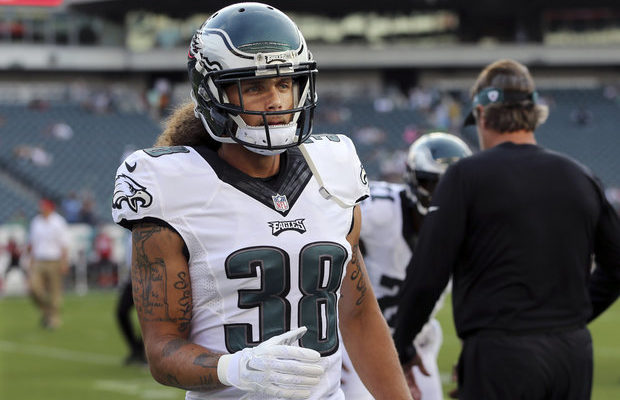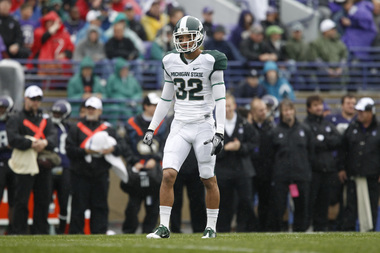How the CFL Prepares Cornerbacks For The NFL

As Mitchell White attempts to make the Philadelphia Eagles’ 53-man roster this year after three seasons in the Canadian Football League, he’ll have a clear-cut precedent to follow in the form of a good friend.
White signed with the Eagles this week, less than a calendar year after Aaron Grymes joined the team. Like White, Grymes was a star cornerback in the CFL before arriving in Philadelphia, and though the Birds cut him twice last season, Grymes stuck around and made his NFL debut in November.
White and Grymes grew close in 2015, when they worked out for several NFL teams together.
“We just kind of hit it off,” White said Monday in a phone interview with PennLive. “I always respected him as a player, and he ended up being a really cool guy.”
And it’s no coincidence the CFL produced two of the cornerbacks the Eagles will take into spring workouts, White said.
Different rules and field dimensions in the Canadian league put extra stress on secondaries, expediting the develop of young defensive backs. A regulation CFL field is more than 11 yards wider than the NFL’s, and receivers up North are able to move forward before the snap — as long as they don’t cross the line of scrimmage — without drawing an illegal motion penalty.
The result? CFL cornerbacks have more ground to cover and often defend route runners who get a sprinting start.
“The wide receivers can move behind the line of scrimmage, and they can run at you,” White said. “They could start 100 yards away if they wanted to, and they can run at you, and if they time it out right, they can come full speed. So you learn how to cover in a difficult spot.”
CFL plays like the one below, with multiple receivers moving forward before the snap, are common.
White said CFL cornerbacks need to have lightning-quick feet and sound instincts to cover receivers who are running toward them pre-snap. And in recent years, a high percentage of the few players who trickled into the NFL from Canada have played in the secondary, adding tangible evidence to White’s thought that the CFL helps corners develop their skillsets.
In addition to Grymes, Saints safety Erik Harris and Jaguars cornerback Josh Johnson both contributed to NFL teams this season after leaving the CFL a year earlier.
And another cornerback completed one of the most successful CFL to NFL transitions over the past decade. In 2011, Seahawks cornerback Brandon Browner made the Pro Bowl in his first season back in the states after spending the previous four seasons with CFL’s Calgary Stampeders.

The Eagles announced on Monday the signing of cornerback Mitchell White, shown here at Michigan State in 2010. (AP Photo/Nam Y. Huh)
The way White sees it, the CFL not only reinforces the importance of strong technique, but it also helps defensive backs develop tough-mindedness.
“You learn how to cover and you feel comfortable getting beat,” White said. “I don’t care how fast you are — if a guy gets a running start, he’s going to run by you more times than not, if he’s worth anything as an athlete. So you have to feel comfortable saying, ‘Look, this guy just beat me, but I still have to practice my skills.'”
White, who played his college ball at Michigan State and helped lead the Ottawa Redblacks to a Grey Cup championship in November, said CFL referees are also more strict about pass interference. They don’t let as much contact slide as NFL officials do.
It’s just another obstacle CFL cornerbacks face, White said, and it’s another reason he and Grymes feel they can succeed in Philadelphia.
While they’ll often be squaring off against better athletes in the NFL, they’ll do so under circumstances more friendly to their position.
“It’s definitely a challenge in Canada,” White said. “I think that’s the hardest position to play in that league is defensive back. But if you can do it, there’s a really good payoff.”
Reposted by permission. Read the original article in PennLive by Aaron Kasinitz
Aaron Kasintiz is the Philadelphia Eagles beat reporter for PennLive and The Harrisburg Patriot-News. He covers the NFL team full-time, while also working on various enterprise projects on and off the beat.
